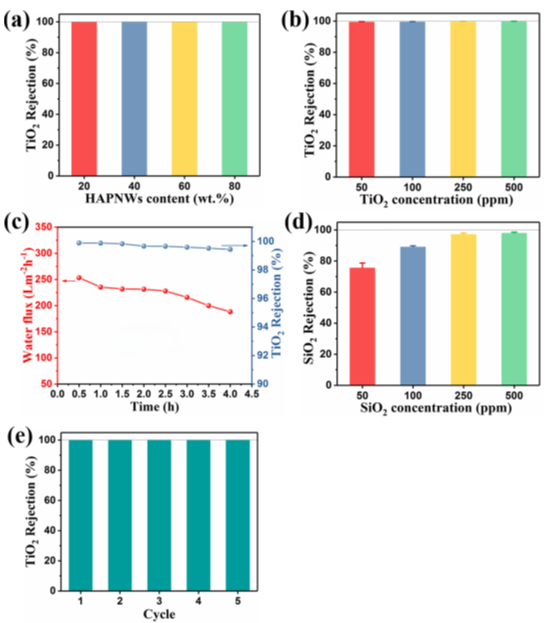A New Type of Water Purification Filter Paper Based on Ultralong Hydroxyapatite Nanowires
Facing the challenges of the water shortage and the water pollution, it is of great importance in developing various water treatment technologies or new filter materials. Because of the advantages in easy operation, simple equipment and high separation efficiency, the membrane separation technology is becoming one of the most important methods in the separation science.
Nowadays, a variety of the filter membranes for the water treatment are widely used in the industry and in the daily life. However, some filter membrane materials are poorly biocompatible or have low separation efficiency. Some use or generate harmful chemicals in the production process. Others are of single function and, therefore require a multiple filtration system to improve the efficiency of water treatment. This inevitably increases the complexity and cost of the water processing facility. That’s why it is essential to develop the filtration materials which are environmentally friendly, multifunctional and highly efficient.
The research team, led by Prof. Ying-Jie Zhu at Shanghai Institute of Ceramics, Chinese Academy of Sciences, has successfully developed a new type of water purification filter paper based on the biocompatible ultralong hydroxyapatite nanowires combining the natural plant fibers.
The combination of ultralong hydroxyapatite nanowires and natural plant fibers significantly improves the mechanical strength of the new water purification filter paper. Meanwhile, the polyamidoamine-epichlorohydrin (PAE) resin greatly enhances the wet mechanical strength of the paper.
Ultralong hydroxyapatite nanowires interweave with each other to form a nanoscale porous network structure, which can greatly increase the porosity of the filter paper and regulate its pore size. As the superhydrophilicity, surface interception ability, adsorption capacity and separation performance of the filter paper are promoted, it can remove the water pollutants in an effective way. In addition, ultralong hydroxyapatite nanowires have properties in adsorption and ion exchange, which can remove organic dyes and heavy metal ions.
Therefore, the new water purification filter paper, which is durable and recyclable, exhibits excellent filterability and adsorbability. It acquires a promising application in the field of water purification and clean water regeneration.
The experiment results show that the pure water flux of the new water purification filter paper (with addition of PAE) rises with increasing content of ultralong hydroxyapatite nanowires, which is 287.28 L m–2 h–1 bar–1 when the content of ultralong hydroxyapatite nanowires is 80 wt.%. It is about 3200 times higher than that of the filter paper (with addition of PAE) made from plant fibers with a high beating degree. The new water purification filter paper, with the removal efficiency of/approaching 100%, realizes highly efficient filtration for removing the contaminants such as microparticles, nanoparticles, bacteria, etc. Moreover, the new water purification filter paper has a high adsorption capacity and ion exchange ability for organic dyes and heavy metal ions, especially Pb2+ ions. It enables 100% removal for low concentrations of organic dyes and heavy metal ions.
The relevant research results were published in ACS Applied Materials & Interfaces, 2019, 11, 4288–4301.

New water purification filter paper sheets with different weight ratios of ultralong hydroxyapatite nanowires

Relationship between pure water flux of the new water purification filter paper and weight ratio of ultralong hydroxyapatite nanowires under different working pressures

Separation properties of TiO2 and SiO2 nanoparticles by the new water purification filter paper and its recycling performance

Removal property of bacteria in drinking water by the new water purification filter paper and its recycling performance
Reference: https://pubs.acs.org.ccindex.cn/doi/10.1021/acsami.8b20703
Contact:
Prof. Ying-Jie Zhu
Shanghai Institute of Ceramics
y.j.zhu@mail.sic.ac.cn



